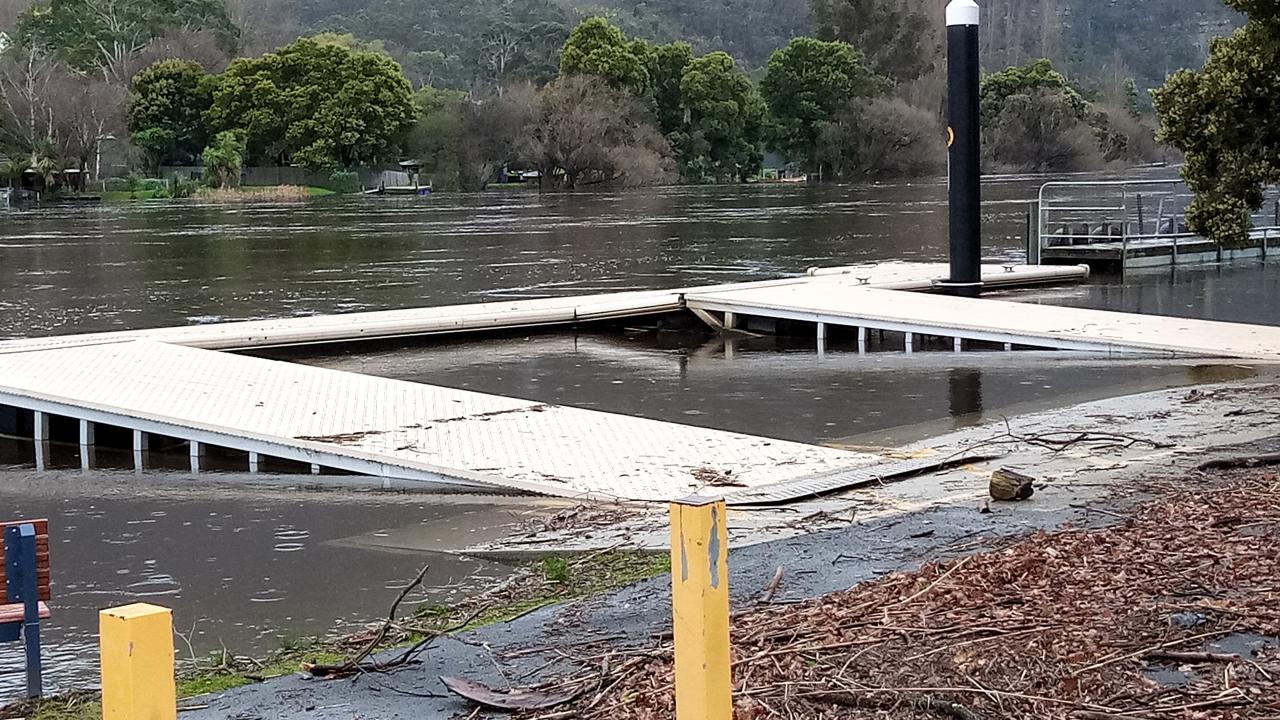Good fishing in spring the silver lining in storm clouds

IT HAS been a long time since all of Tasmania has had flood warnings involving every one of it's catchments and Hydro Tasmania issued warning emails about this last Friday.
By early Saturday morning all Hydro Tasmania boat ramps and campgrounds across Tasmania were closed until further notice and by Saturday night we saw winds comparable to a category three cyclone hit us which caused widespread damage and power outages for thousands of Tasmanians.
Weather forecasts have improved slightly since but there is a lot of debris laying around and it will be while before we can get back out there to properly fish our favourite spots.
Saying that we're in for a treat when that time comes and we should be able to enjoy some of the best trout fishing we've seen for some time.
With trout getting over the stress from spawning they will be hungry and looking to put more condition back on after the winter dull and dry period which in turn means better fishing for us.
Trout will especially look to feed on bait like worms, grubs, slugs, snails, frogs and other food which has been washed out by the flood water.
Right now if you can, find and fish bait in slow running pockets of slack water off to the side of the main faster flowing currents you'll most likely catch fish.
In my experience slow rising, constant higher water levels fish better than fast rising flash flooding or fast dropping water levels.
Flash flooding and fast rising water brings in a lot of debris and with that brings danger so fish tend to seek refuge until the coast is clearer.
Oppositely when water levels quickly drop fish tend to panic, not feed and go into safety mode because they don't want to get stranded in areas they can't get out of.
In our larger lakes water levels tend to rise slower than in our rivers which is also determined by Hydro usage in relation to power needs.
Awesome fishing can be had when lake levels gradually cover the marshy and grassy shores and a lot of our highland waters have been lacking water height for a long time.
Places like Arthurs Lake, Lake King William, Lake Echo and Great Lake should fish well with trout gorging themselves on worms, grubs, frogs and snails and anything they can find.
Smaller waters in the highlands should also fire with places like Little Pine Lagoon, Pine Tier Lagoon and waters in the "19 Lagoons" area rising fast and fish know time and suitable conditions are limited and they will be looking to make the most of it.
Backwater and margin feeding fish know the best places or "beats" to feed and they focus on the areas that contain the most food more often.
Bait anglers will enjoy success where permitted using worms and grubs and lure anglers will also benefit by using bright coloured soft plastics or those with a tail to add noise and vibration.
Brightly coloured hardbodies,spinners, vibes, celtas and swimbaits should be considered as well in both shallow and deep water and fly anglers throwing wet flies will have success with woolly worms, woolly buggers and matukas.
We might be a bit limited in our fishing options right now but in time we will all benefit from the boost in water we've seen recently and we should be able to enjoy some of the best trout fishing Tasmania has to offer this coming spring.
THE Inland Fisheries Service has again reported that rainbow trout spawning has well and truly started with great numbers turning up in the fish trap at Liawenee on Great Lake.
The IFS has started moving fish into spawning channels so they can start producing the next generation of wild rainbow trout for Great Lake.
The spawning channels provide improved habitat for natural rainbow trout recruitment and provide a source of wild fry for stocking a small number of fisheries.
Having seen a increase in rainbow trout populations and spawning activity in recent years up at Great Lake with improved conditions lately it could prove to be one of their best reproductive seasons yet.
The IFS also sourced 150 wild rainbow trout from the spawning trap and stocked them into Lake Sorell on August 27 with all fish reported to be healthy at around 0.844kg in weight.
A reminder that designated rainbow trout waters in Tasmania open to fishing on September 28.
A NEW memorandum of understanding between forestry and the Inland Fisheries Service will help provide improved fishing opportunities for our anglers while rehabilitating vital river ecosystems.
Under the new partnership between the IFS, Lenah Estate and Sustainable Forest Management a 40-metre wide streamside reserve on plantations owned by Lenah Estate on the Tyenna and Junee rivers will be rehabilitated with native vegetation.
A 600-metre long streamside reserve is the first to be established in accordance with the MoU and is being rehabilitated by SFM and the Derwent Catchment Project.
Windthrown trees will be removed from the river as well as pine and weed from the riverbank with native species replanted and a parking area and trail established for angler access.
This work will not only improve water quality but also reduce erosion but also establish and maintain native vegetation which in turn will reduce water temperatures and help maintain river health.
In total the MoU covers an area of 32.56ha and 6km of riverbank in and around Maydena.
TIP OF THE WEEK: Flood water fishing can be rewarding but it's also risky. If you're looking to go fishing avoid areas with dangerous currents close to the bank, slippery slopes underfoot and go with a friend and let people know where you're going and when you'll be back. Tight lines until next week.
Send in your fishing reports,pics and tips to valleyfishes@gmail.com and keep track of the Derwent Valley Gazette Fishing Column at derwentvalleygazette.com




Add new comment